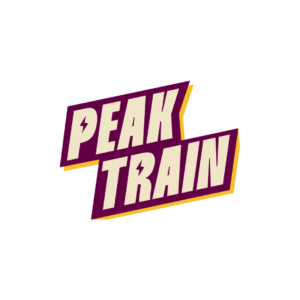A Deep Dive into Strategic Planning: Models vs. Frameworks
Embark upon a treasure hunt using two crucial items — a map and a set of rules. The scenario depicts a model identical to the map while the framework mirrors the guidelines. The achievement of your quest depends on comprehending these two components separately and their combined advantages. Your problem-solving ability improves dramatically when you understand the difference between strategic planning models and frameworks and their relationship, regardless of your role as an innovator, strategic business leader, or researcher.
This blog explores the fundamental concepts to explain their characteristics and ability to combine capabilities. Better strategic planning and intelligent decision-making become possible when people understand the distinct capabilities of models and frameworks in their applications and combined operations.
Understanding Strategic Planning Models
Strategic planning follows systematic approaches that help organizations develop advanced strategic approaches. A step-by-step structure directs the organizational development of strategic plans, enabling organizations to build and execute their strategic frameworks. The models help organizations establish an efficient, systematic planning procedure that guides decisions about setting targets and evaluating resources through strategic implementation.
Some common strategic planning models include:
- The Balanced Scorecard Model
Through their development, Robert Kaplan and David Norton created the Balanced Scorecard model, which utilizes financial and custom, customer, process, learning, and growth perspectives. The model provides organizations with a system to link business operations to their strategic vision and monitor performance metrics specified as key performance indicators (KPIs).
- The SWOT Analysis Model
SWOT is a familiar strategic planning tool that allows organizations to explore their internal capabilities and discover external market opportunities and threats. The model delivers a systematic way of developing strategies and making decisions.
- The Porter’s Five Forces Model
Industry competitive forces are assessed through the strategic evaluation model established by Michael Porter. An analysis of competitive rivalry, supplier power, and buyer power should connect with examining new competitor threats that must incorporate substitute product threats. Organizations implement this model to study industry forces, which enables them to devise competitive advantage strategies.
Understanding Strategic Planning Frameworks
The strategic planning frameworks function as conceptual models which offer guidelines to direct the strategic planning process. Framework systems operate differently from models since they give organizations flexible guidelines to customize to their specific requirements. Multiple strategic planning frameworks exist in practical use among organizations, including:
- The OKR (Objectives and Key Results)
Framework Organizations use OKRs to establish challenging targets while measuring specific outcomes for performance tracking. Technical organizations and startup businesses extensively employ this framework to unite their team performance with organizational goals. The system promotes responsible decision-making through open practices that create results-based deliverables.
- The PESTLE Framework
Organizations can use PESTLE (Political, Economic, Social, Technological, Legal, and Environmental) analysis to examine business-strategic shaping factors in the external environment. The framework uses external factors to generate educated strategic choices.
- The McKinsey 7S Framework
The seven organizational components within this framework include strategy, structure, systems, shared values, style, staff, and skills. The model connects organizational elements to support plan execution and strategic initiative delivery.
Distinctions Exist Among Models and Frameworks
Strategic planning incorporates models together with frameworks, but they demonstrate distinct characteristics between them:
- Purpose
A framework exists to create shared knowledge about how issues are handled, together with standardized methods for making decisions. Internally, organizations use this tool to create consistent actions that link across various projects and departments.
The strategic plan creates an organizational roadmap that directs future actions. The document establishes precise goals and objectives that direct decision processes and budgetary decisions.
- Flexibility
Strategic plans exhibit higher flexibility than frameworks because the framework is intended to fit various circumstances. An organization can use the defined principles according to its unique requirements.
Strategic plans maintain a more structured nature by establishing target objectives alongside limited time frames. Significant changes in business strategy lead to complete modifications of the document’s content.
- Implementation
Implementing frameworks proceeds by creating policies that match the framework’s guiding principles and developing associated procedures and practices. The framework establishes a decision model that provides uniform solutions to organizational problems.
Strategic plans achieve their objectives through dedicated projects that carry out the initiatives described in the plan. Implementing these programs needs an approach that focuses on specific goals.
- Measurement
The measurement of frameworks happens through assessments that verify their compliance with framework principles and best practices. A set of key performance indicators provides a method to evaluate how well the framework accomplishes its definite results.
Strategic plans are assessed by achieving predetermined goals initially stated in the plan document. The plan reaches its performance assessment stage by tracking key performance indicators that measure progress toward strategic objectives. These indicators help evaluate the final success of the strategic plan.
Conclusion
Organizations must understand how strategic planning models differ from frameworks for creating effective strategies. Strategic models deliver defined methods for execution, but frameworks offer analytical frameworks intended to boost decision-making strategies. Organizations must select the best-suited planning method that fits their requirements and market conditions for lasting business success. Businesses can develop driving force strategies and market competitiveness by properly selecting strategic planning utilities.













